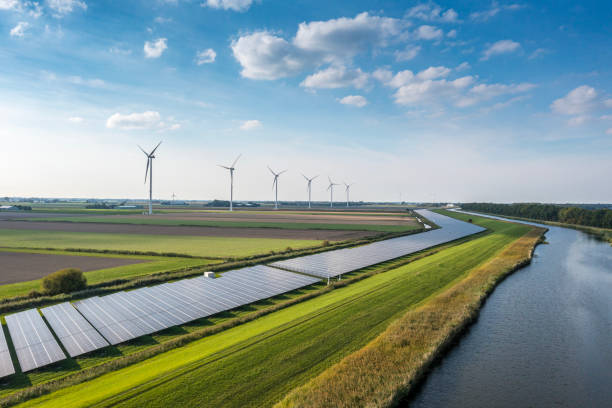1. Artificial Intelligence (AI) and Machine Learning (ML)
Artificial Intelligence (AI) and Machine Learning (ML) have given a new color to the world of Technology Trends, and these trends will continue in 2024 as well. Applications of AI and ML are making their way into every field, be it healthcare, finance, or education. With AI, computers, and machines have become more intelligent and capable, which helps them make decisions similar to humans. Machine learning algorithms have become more efficient, providing valuable insights for analyzing data.
With the advancement of AI and ML, the concept of personalized services is also evolving. As online shopping platforms now use AI algorithms to understand customer preferences and get customized recommendations. In the healthcare sector, AI diagnostic tools can help detect diseases at an early stage. In finance, AI-based fraud detection systems monitor transactions and identify suspicious activity. These trends are going to give rise to even more advanced and integrated technologies in the future, which will further expand the capabilities of AI and ML.
2. 5G technology and beyond

5G technology promises to take connectivity to new heights. This technology is dramatically improving data transmission with high-speed internet and low latency. With 5G, seamless communication between mobile devices and Internet of Things (IoT) devices is becoming possible. With technology, Augmented Reality (AR) and Virtual Reality (VR) applications are also becoming more immersive and responsive.
In 2024, advanced versions of 5G technology, such as 5G NR (New Radio) and 5G SA (Standalone), are also slated to be introduced which will further improve network efficiency and performance. 5G is seeing potential in every sector, from use case healthcare to smart cities. In healthcare, remote surgeries and real-time health monitoring are getting easier with 5G. In smart cities, traffic management and public safety systems are being optimized with the help of 5G. The evolution of 5G technology is accelerating global connectivity and digital transformation.
3. Quantum computing
Quantum computing is a technology that is trying to overcome the limitations of classical computing. This computing model is based on the principles of quantum mechanics, which is quite different from traditional binary computing. Quantum computers are capable of solving complex problems that are practically impossible for classical computers.
In 2024, the development and research of quantum computing have accelerated considerably. Major tech companies and research institutes are investing heavily in the field. Quantum computing capabilities enable significant advances in cryptography, drug discovery, and optimization problems. For example, using quantum algorithms to simulate the interactions of molecules and materials could revolutionize the drug discovery process. This technology is still in the development stage, but its future potential.
4. Edge Computing
Edge computing has shifted data processing and analysis from the cloud to edge devices, significantly reducing latency. With technology, data processing and analytics can be done on a real-time basis, which is essential for critical applications. The key advantage of edge computing is that it processes data on local devices, enabling faster decision-making and reducing latency.
In 2024, the adoption of edge computing is becoming widespread, especially in applications such as autonomous vehicles, industrial automation, and smart cities. Autonomous vehicles require real-time data processing to ensure accurate decisions and safe driving. In industrial automation, edge computing is about improving the efficiency and effectiveness of processing data from sensors and devices. In smart cities, edge computing is enhancing traffic management and public safety systems. This technology supports data-driven insights and real-time decision-making.
5. Internet of Things (IoT)
The Internet of Things (IoT) is a technology that connects physical devices over the Internet, enabling data exchange and remote monitoring. IoT devices are everywhere – smart homes, wearables, industrial machinery, and healthcare devices. In 2024, the evolution of IoT is becoming even more advanced, increasing connectivity and data sharing.
Applications of IoT are seen in healthcare, smart homes, and industrial automation. In healthcare, wearable devices and remote monitoring systems continuously monitor patient health data and enable timely interventions. In smart homes, IoT devices such as smart thermostats and lighting systems increase energy efficiency and convenience. In industrial automation, IoT sensors track machinery performance and enable predictive maintenance. Through IoT technology, data-driven decision-making.
6. Blockchain Technology

Blockchain technology has revolutionized digital transactions and data security. This decentralized ledger technology makes transaction records secure and transparent, preventing tampering and fraud. In 2024, blockchain applications are expanding beyond cryptocurrency, such as supply chain management, healthcare, and voting systems.
In supply chain management, blockchain is enhancing transparency and traceability, ensuring product authenticity and preventing fraud. In healthcare, blockchain is securely managing patient health records and improving data interoperability. In voting systems, blockchain is to ensure election integrity and transparency, minimizing tampering and fraud. Through blockchain technology, a secure and transparent system is being implemented that makes digital transactions reliable and trustworthy.
7. Augmented Reality (AR) and Virtual Reality (VR)
Augmented Reality (AR) and Virtual Reality (VR) technologies provide new dimensions to immersive experiences. Use cases for AR and VR are seen in education, gaming, healthcare, and remote work. In 2024, the development and adoption of AR and VR technologies will be accelerating, whichwillo expand the applications of the technologies.
In education, AR and VR provide interactive learning experiences, which improve student engagement and understanding. In the gaming industry, VR is enabling immersive gameplay and realistic experiences. In healthcare, AR and VR provide training and simulation tools that help medical professionals train and improve their skills. In remote work, AR and VR enable virtual meetings and collaboration tools that connect geographically dispersed teams. The future of AR and VR is promising and these technologies are constantly evolving.
8. Enhance Cybersecurity
The importance of cyber security is increasing day by day, and this trend will continue in 2024 as well. In the context of digital transformation and increasing cyber threats, organizations and individuals need better cyber security measures. Advanced cybersecurity solutions with artificial intelligence-based threat detection, blockchain-based security, and zero-trust architecture help mitigate security risks.
AI-based threat detection systems enable real-time monitoring and anomaly detection, which identify and respond to potential threats. Blockchain-based security solutions enhance data integrity and transaction security. A zero-trust architecture helps the security model optimize network access and data protection. Improved cyber security measures protect organizations and individuals from cyber threats and are critical to creating a secure digital environment
9. Autonomous Vehicles
Autonomous vehicles have revolutionized the transportation industry, and this trend will continue in 2024. Autonomous vehicles operate without human intervention through self-driving technology, improving safety and efficiency. In the development of autonomous vehicles, machine learning, computer vision, and sensor technologies are being used.
Autonomous vehicles are expected to reduce potential traffic congestion, reduce accident rates, and reduce transportation costs. Self-driving cars use real-time data and advanced algorithms to analyze road conditions and traffic patterns. In the logistics and delivery industry, autonomous vehicles will help improve the transportation of goods and increase delivery efficiency. The future of autonomous vehicle innovation and adoption is promising, and the technology is set to redefine transportation.
10. Green Technology Trends

Green technologies are technologies developed to promote environmental sustainability and energy efficiency. In 2024, the adoption of green technology will be even more frequent, promoting renewable energy sources, energy-efficient appliances, and sustainable practices. Green technology aims to provide environment-friendly solutions and reduce carbon footprint.
Renewable energy sources such as solar, wind, and hydropower reduce environmental impact and provide sustainable energy solutions. Energy-efficient appliances and technologies optimize energy consumption and enable cost savings. Sustainable practices and green technologies support environmental protection and climate change mitigation. Through green technology, environmental impact is being minimized to implement sustainable and eco-friendly solutions
